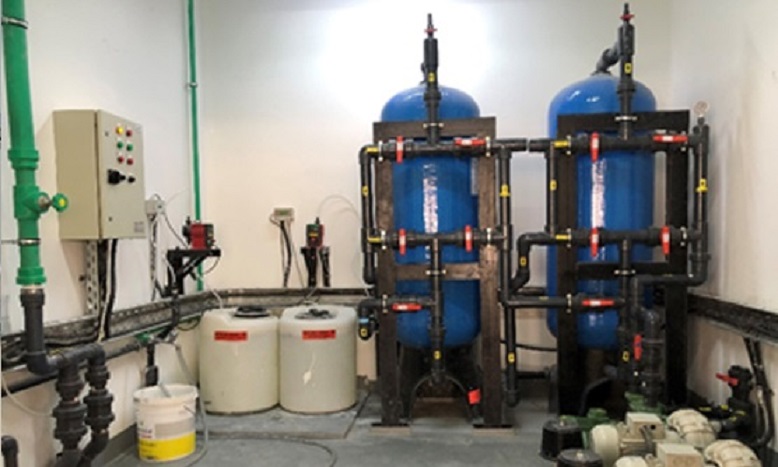
The importance of installing a Reverse Osmosis plant in mosques
Installing a reverse osmosis plant in the mosques is one of the means to meet the water needs in scarce areas to reuse “gray water”.
GRAY WATER
It is the output of used water except for toilet water, which is specifically laundry water, shower water, laundry water, kitchen water, dishwasher water, etc. However, in this guide, we recommend not connecting the kitchen wastewater and dishwasher water to the gray water tank because it contains fats, oils, and food residues, as it increases the processing requirements and costs, and this is in accordance with German specifications.
Gray water resulting from ablution basins in mosques is considered one of the purest types of gray water, and therefore it can be reused in parcel boxes and agriculture, after being treated in simple, inexpensive ways. It constitutes a significant resource that can replace part of fresh water and reduce the total demand. on the water.
Objectives of gray water treatment if used for irrigation
When gray water is treated and used for irrigation, it can achieve three goals:
- Food security through crop cultivation.
- Saving fresh water and money spent to buy irrigation water.
- Savings in sanitation expenses.
Economic, environmental, and health benefits of Reverse Osmosis plant
Gray water treatment systems are effective in alleviating poverty in water-scarce areas.
Research has shown that proven general benefits of treated greywater reuse at the domestic level include the following:
- Reducing the use of fresh water.
- Less pressure on sanitary pits.
- Low use of energy and chemicals.
- Better growth of plants and increase in yield.
- Groundwater recharge.
What is the cost of installing a reverse osmosis plant in mosques?
Other economic benefits
Reducing financial investment in wells and increasing the value of real estate.
As for the environmental benefits, the most important of them is reducing the risk of groundwater contamination, and preventing the spread of insects such as mosquitoes that cause malaria.
How is ablution water treated?
The treatment of ablution water goes through a number of stages, which we summarize as follows:
- Designing the sewage system in the mosque so that the ablution water pipes are completely separated from the black water pipes. A drainage station is placed between the two systems to convert gray water into black water (and not vice versa, of course). In order to use it when the gray water exceeds the need or when the water circulation system is under maintenance.
- The ablution water is collected in a collection tank to separate impurities from the water, if any, then these impurities are disposed of by opening a stopcock at the bottom of the tank from time to time to be thrown into the black water system.
- The ablution water is pumped from the collection tank to the filters (filters), and the water passes through two types of filters. The first contains fine sand to remove the remaining solid impurities, while the second contains active carbon to remove any organic materials, if any. These filters are automatically re-cleaned to remove particulate matter (Backwash Process).
- Injection of some chemicals to treat gray water, such as hypochlorite, to sterilize water and kill germs. Other materials neutralize the acidity of water and remove any unwanted odor. The water is also passed through an ultraviolet ray device to kill any remnants of germs and bacteria, then the water passes through the last micro-filter to ensure that there are no plankton or hair.
- Now the ablution water is reusable. The water from the previous stage is collected in the production tank, then pumped to the upper tank via a lifting pump. So that the water is used again by distributing it to all parcel boxes in the bathrooms, or for use in garden irrigation, car washing, or floors.
























